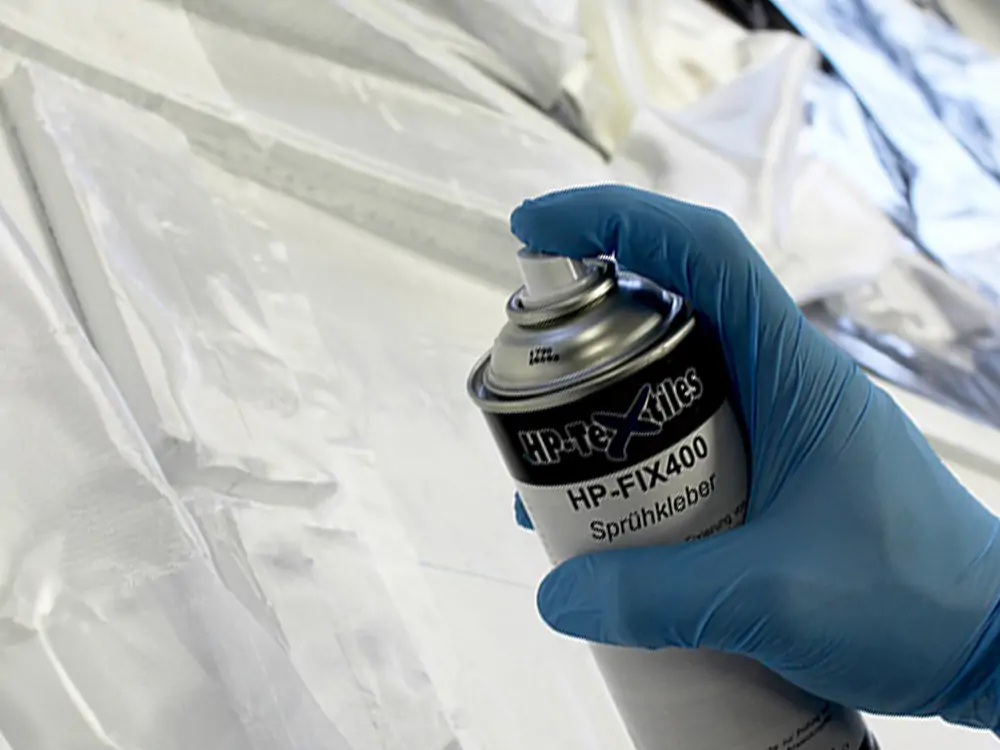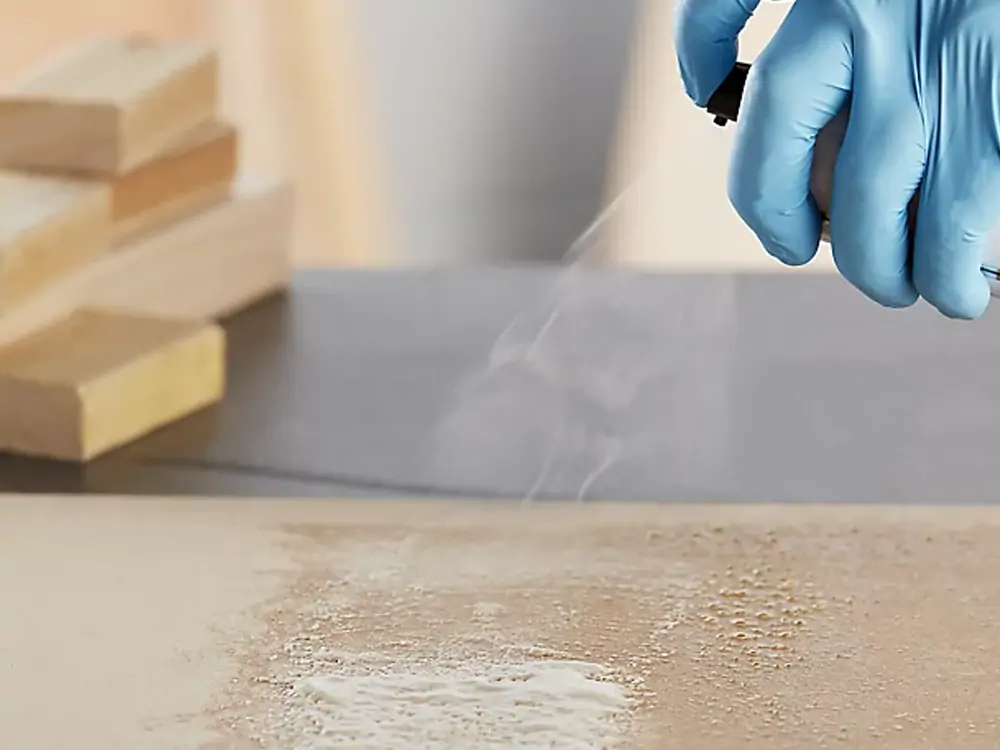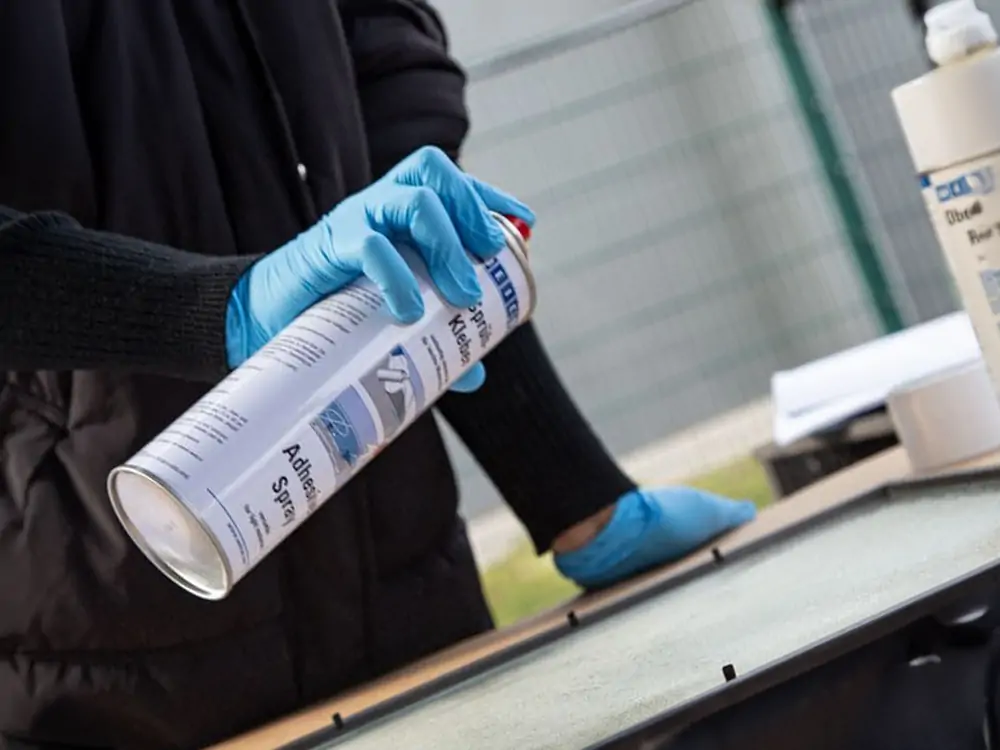Have you ever faced a challenge in attaining the intended bonding effects? Is it hard for your customers to apply it due to its uneven spreading and undesirable stickiness? Do you want to make a reliable spray adhesive to give your customers a strong and instant bond? It would be best if you understood how particle size affects bonding. Producing a spray that fulfills your client’s expectations is an essential step.
Understanding Spray Adhesive Bond:
Spray adhesive swiftly bonds lightweight materials like foam, fabric, and plastic. These sprays are contained in aerosol cans for easy application. The adhesive releases mist or fine particles and adheres to the surface that needs to be joined. The adhesive dries quickly, forming a strong bond between the materials. It helps connect materials that are hard to grip during drying.
These sprays are contained in aerosol cans for easy application. The adhesive is released as a mist or fine particles and sticks to the surface that needs to be joined. The adhesive dries quickly, forming a strong bond between the materials. It is beneficial in connecting the materials that are hard to grip or hold during the drying process.

Impact of Particle Size on Adhesive Bonding
The particle size in adhesive bonding plays a crucial role in developing high-performance adhesives. It significantly influences the properties and performance of the bond. Here are some common ways particle size impacts the spray adhesive performance.
Adhesive Bond Strength:
One major rule of almost all adhesives is that the size of the particle is inversely proportional to the strength of the bond. The power of larger particles to volume then follows from there. This means that, in turn, they increase the overall adhesion surface area, giving room for more contact between the substrate and the adhesive. As a result, this leads to stronger and more reliable results.
Penetration Capability:
The particle size is crucial for determining the penetration strength of spray adhesive. The smaller and finer particles tend to penetrate deeper into the substrate than the large and coarse particles. The smaller particles create a stronger mechanical bond because of their ability to overcome surface irregularities.
Spray Application Result:
The particle size also describes the rheological behavior of spray adhesives. When the adhesive is sprayed, the finer particles will give a more even and uniform coverage over the bonding surface, whereas the coarser particles will give an uneven coverage.
Efficient Drying or Curing Time:
The finer particles give a larger surface area which also increases the drying rate of the spray adhesive. The larger particles may take a longer time to evaporate solvent as the vapors have a long distance to travel. Therefore, if you do not want your surface to dry quickly, try to have a smaller and fine particle spray adhesive.
Final Surface Appearance:
The particle size has a great impact on the appearance of the bond line between the materials. The smaller and finer particles give great results in these situations where the bond line is exposed, and visual appearance is important. Larger particles may result in a rough less attractive appearance.
Cost and Efficiency:
The selection of the right particle size is beneficial for manufacturers and customers in the long run. The smaller particles may require more processing; however, it will be a time investment because the improved adhesion performance will save time and resources in the long term. In this manner, the manufacturer will be able to make high-processing adhesives at a reduced overall cost.

The Choice of Right Particle Size:
1. Small Particle Size
Small particle size affects the bonding strength in several ways;
- Increases surface area that gives more contact points between adhesives and substrate.
- It provides stronger and more reliable bonds between the materials.
- The smaller size particles penetrate easily into the porous and irregular surfaces.
- They require shorter drying and curing time.
- They have low viscosity and can easily spread on the surface.
2. Large Particle Size
Larger particle sizes are not a good option for manufacturers. There several features of large particle size are mentioned below;
- The larger particle size provides the weaker bonds because of their small surface area.
- They provide fewer contact points between the adhesives and the bonding surface.
- They show irregular spread, resulting in over-application in some places and under-application in other places.
- They require longer drying and curing time.
They give viscous spray that can result in clogging of the nozzle.

Where Do We Use Small Size Particles and Large Size Particles Adhesives
The choice of developing large particle size adhesives and small particle size adhesives depends on their final use.
Small Size Particles Adhesive Application:
- Electronics and electrical components.
- Glossy Surfaces like mirrors or polished metals.
- Fine arts and art projects.
- Aesthetic furniture or woodworking.
Large Size Particle Adhesives Application:
- Architecture and construction.
- Heavy mechanical tools attachment.
- Safety and anti-slip applications.
- Vibration resistance.
- Textile bonding
Tips for Optimizing Spray Adhesives Bonding Results
When optimizing the bonding results of spray adhesives, a manufacturer should focus on key strategies for attaining the right particle size to ensure the effectiveness of adhesives. Here are some strategies that can help the manufacturer do the job.
Multiple Formulations:
A manufacturer should formulate multiple formulations with varying particle sizes to fulfill bonding needs. A range of products with different particle sizes helps customers choose the adhesive that best fits their needs.
Controlling particle Size Distribution:
The particle size distribution is an important factor for spray adhesives. It helps manufacturers deal with issues such as clogging or uneven application. It also helps balance performance characteristics such as spray coverage, adhesion strength, and drying time. Manufacturers should monitor particle size during production to maintain quality.
Improve Spray Nozzle Design:
The design of the spray nozzle is crucial for increasing spray efficiency according to different particle sizes. The nozzle should have a controlled even spray pattern, for small and fine particles. For large particles, the nozzle should handle thicker formulations without clogging.
Provide Clear Usage Instructions:
Clear and detailed instructions on how and where to apply adhesives with a particular particle size should be on the container. This includes tips for fixing nozzle settings, spray techniques, and surface preparation. This helps users to achieve the best results.
Environmental Impact:
Manufacturers need to adjust the formulation of adhesives according to environmental conditions. This adjustment will help customers achieve stable results in different environments.
For instance, in the high humid zones, adhesives may take longer to dry. Excess moisture can interfere with their ability to form powerful bonds. Thus, manufacturers should opt for small-sized particles for developing effective adhesives.
Sustainability and Safety:
There has been a growing interest in using eco-friendly and non-toxic materials in adhesive formulations. However, manufacturers have to ensure that the size of the particles does not pose a hazard to the environment and the user’s safety. Moreover, adjusting the particle size with the view of producing less waste and increasing application efficiency can perhaps guarantee more sustainable manufacturing.
Conclusion:
In conclusion, understanding the impact of particle size is very important for a manufacturer producing spray adhesive. Manufacturers can optimize the bonding results of the adhesives by choosing the right particle size based on the final results. We learned that particle size directly influences the bond between adhesives and substrates. Smaller and finer particle sizes will give strong bonds and a smooth bond line appearance, whereas larger and coarser particle sizes will give a rough texture and form a weak bond. It is essential to understand the nozzle design to avoid clogging; therefore, manufacturers can create versatile and effective adhesive solutions by prioritizing particle size optimization and using best practices.
